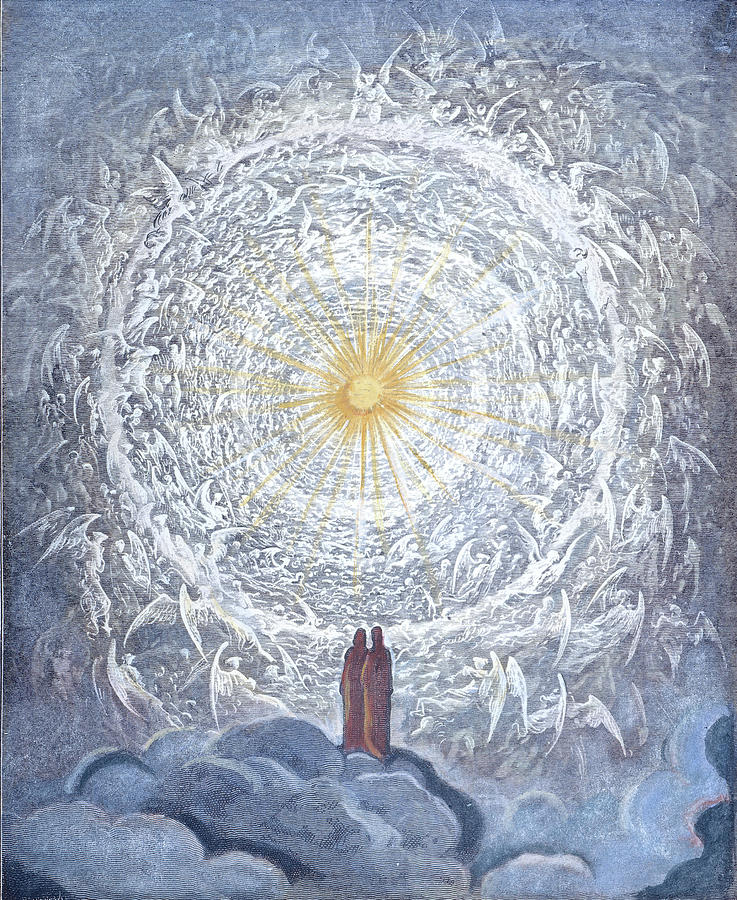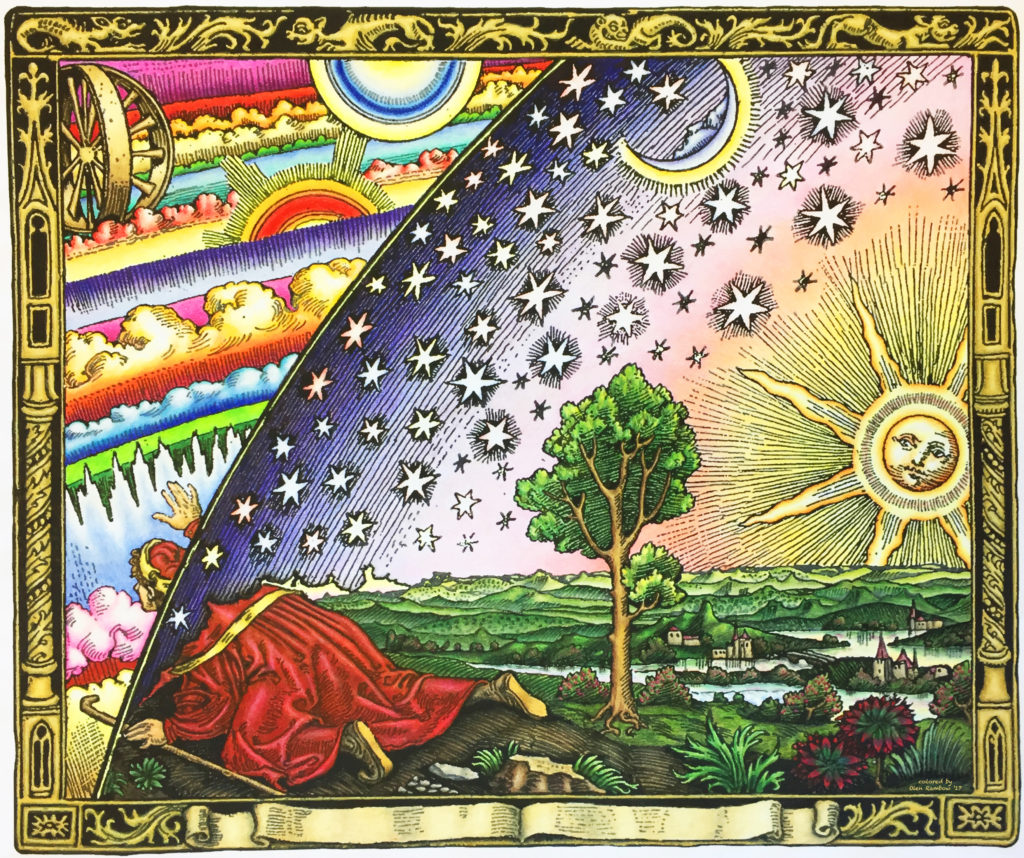What does EMPYREAN mean?
EMPYREAN

Gustave Doré’s The Multifoliate Rose (1867), illustrating Dante’s Paradiso, Canto 31:1-8.

“Whether the sky be clear or cloudy, it always seems to us to have the shape of an elliptic arch; far from having the form of a circular arch, it always seems flattened and depressed above our heads, and gradually to become farther removed toward the horizon. Our ancestors imagined that this blue vault was really what the eye would lead them to believe it to be; but, as Voltaire remarks, this is about as reasonable as if a silk-worm took his web for the limits of the universe. The Greek astronomers represented it as formed of a solid crystal substance; and so recently as Copernicus, a large number of astronomers thought it was as solid as plate-glass. The Latin poets placed the divinities of Olympus and the stately mythological court upon this vault, above the planets and the fixed stars. Previous to the knowledge that the earth was moving in space, and that space is everywhere, theologians had installed the Trinity in the empyrean, the glorified body of Jesus, that of the Virgin Mary, the angelic hierarchy, the saints, and all the heavenly host…. A naïve missionary of the Middle Ages even tells us that, in one of his voyages in search of the terrestrial paradise, he reached the horizon where the earth and the heavens met, and that he discovered a certain point where they were not joined together, and where, by stooping his shoulders, he passed under the roof of the heavens…”
L’atmosphère: météorologie populaire (“The Atmosphere: Popular Meteorology”), Camille Flammarion’s, 1888, pg. 162.

